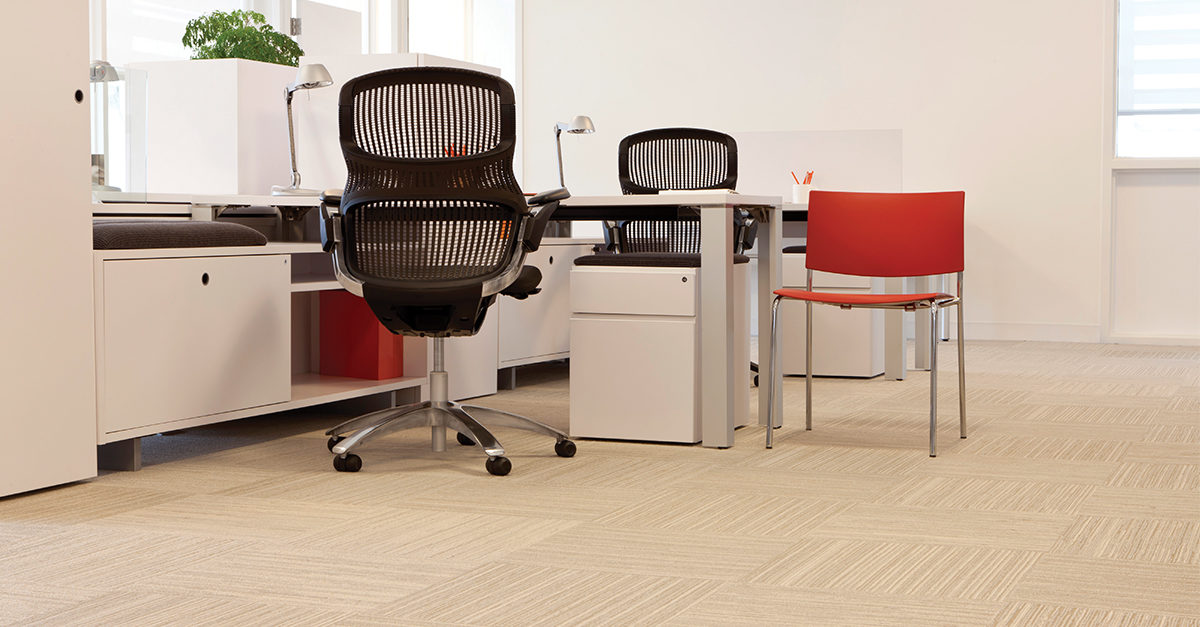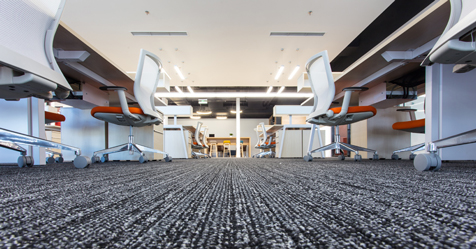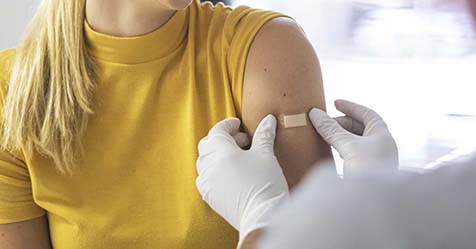The ever-changing world of carpet continues to evolve with technology, styling, size, shape, daring colors, and cutting-edge innovations, and there does not appear to be an end in sight. Let’s take a look at some current trends and how they will affect those who have to take care of these products.
Color
In commercial installations, the trend is toward bright colors that make a space pop. Lighter colors, such as bright yellow, pink, and light blues of varying shades are being used in flooring materials, particularly carpet tiles.
Though stunning in their brilliance and visual impact, yellow in particular is the worst color to get—and keep—clean. If the carpet is for low-traffic areas or used as a small accent yarn, it may work, but in high-traffic areas that see a lot of soiling, the carpet will create more frustration for end-users than they expect or may want to deal with.
Light colors show the soil more. By contrast, dark colors show lint and dust, and medium colors hide the most. Look for more earthy neutrals blended with bold colors for 2016.
Carpet Tile Backings
Carpet tile is the most highly engineered textile floor covering material in existence. Its use has exploded and continues to grow. It possesses a multitude of attributes, not the least of which is ease of transportation and installation in high-rise buildings.
Most would have you believe that the most positive feature of carpet tiles is ease of replacing a tile from damage or a spill. While taking up one tile and replacing it is easy, the new tile may stick out like a sore thumb due to the soiling, color change, traffic, or wear-and-tear of surrounding tiles. While ease of replacing an affected tile is a nice theory, it doesn’t always hold true in reality.
Carpet tile backings can be made from PVC, polyester, polypropylene, polyurethane, and other materials. Many of these backings contain recycled content, such as soda and water bottles, windshield liners, and recycled fiber.
New Installation Technology
For the most part, installation technology and carpet tiles go hand in hand. Adhesive out of a bucket is losing favor and considered “non-green.” Separate adhesive can also be compromised by substrate conditions, incorrect application, contaminant failure (from the substrate, particularly abatement chemicals), cheap adhesive, and environmental conditions. As a result, alternative systems have been developed, such as adhesive squares and pre-applied bonding agents.
Fiber
Nylon is still the king of carpet fibers; it’s durable, long lasting, and can be used in any carpet construction and style configuration from loop to cut pile. Polypropylene’s share of the market is getting smaller, but this fiber is still used on a lot of Main Street-grade carpets. The Main Street Market is composed of small businesses that are most often not national chains; instead, they are the mom-and-pop operations in your community. Wool carpet is still very viable and can be found in high-end residential broadloom carpets and four- and five-star hospitality locations (expensive hotels), convention centers, and the like.
Soft-fiber carpets are made with thin fibers, more of which twist together to achieve performance. Vacuuming is a challenge with soft fibers, since most vacuum cleaners want to dig into them. Another concern is “corn rowing,” which is caused by vacuum cleaner agitation. It may be that a groomer should be used on these carpets, like raking the old shag carpets. However, manufacturers have recommendations as to what type of vacuum or cleaning process to use on the soft fiber carpets.
Here are some facts to remember about carpet fiber: Any carpet fiber can perform at varying levels of service depending on how it is colored and processed. The dying system, color, twist, heat set, pile height, configuration, and amount of a fiber in a square inch will change the way a particular fiber or carpet will perform. For example, you can install a low-performance nylon or a high-performance polyester or blend, such as wool/nylon. Therefore, you can’t make a blanket statement that nylon will outperform any given polyester or any other type of fiber. It depends on the category of performance in the product’s construction.
Carpet Styling and Construction
Most of the new technology used on the face of carpet is coming in the form of state-of-the-art tufting and the ability to create any conceivable pattern. Carpet tufting and weaving machines can make almost any design, style, and pattern imaginable. Installations themselves can be more creative by mixing materials, colors, and designs.
Floor covering in many respects has become art. Tufting machines can create organic stripes, herringbone, natural patterns, planks (carpet tile), non-woven (kinetics and flat weave), digital printing, and other endless capabilities for commercial carpet in addition to residential styles. Carpet tiles also now come in a variety of sizes and shapes that allow for unique patterns and layouts.
These carpets are made differently and you have to understand how these machines work to determine how they achieve the looks and how they impact a carpet’s construction—and therefore, how you care for and maintain them.
There is also finishing technology that will greatly improve the structural integrity of carpet; tuft bind and laminate strength, for example. This could eliminate the use of latex, as this technology would utilize hot-melt-type processes on the backing. These processes are available now, but not extensively in use yet.
New technology is also changing for carpet backings with the use of different materials, the ability to install without using adhesives or tack strip, and attached cushions. As the industry strives to overcome the loss of qualified installers and the shortage of new installers, the methods of installation have to become simpler, easier, and more foolproof. New installation systems can eliminate nearly all of the installation issues currently challenging the market.
Adhesives
Flooring manufacturers will dictate what adhesive they want to use with their product, and those adhesives will contain identifiers, usually in the form of a tiny color chip or variety of color chips that will tell them if it’s their glue. There are many types of adhesive and they come in a variety of qualities. The cheaper ones are cheaper for a reason and generally don’t work as well, as long, or as effectively as the higher-quality, more expensive products.
Why Do Carpet Trends and Selection Matter?
Most carpet product failures are by far the result of putting the wrong product in the wrong place. This can be the result of those who are selling the product not understanding it or the manufacturer possibly not understanding the products.
Common sense must prevail; otherwise, a flooring material or installation failure is inevitable on any job. When you’re dealing with flooring materials, you have to understand where they are being installed and used, what they are expected to do, the make of the product, and if it possess the capability to deliver what is expected of it.
One big issue, which may have you beaming if you specialize in or care for carpet and flooring, is knowing how to carry out proper maintenance. All flooring requires maintenance, and in most cases, this is not a primary consideration during the time of purchase, or it’s not emphasized enough. At the end of the day, the right flooring product in the right place will look good and perform far longer than one may expect—but only if you care for it properly. Your future is secure if you clean and maintain carpet and other flooring products, and you should know as much as you can about the products you choose and how to clean them.
One thing is for certain: If you don’t make yourself aware of the products you service, you will be lost. As I like to say, “If you ain’t learnin’, you can’t know.” And if you’re not willing to do whatever it takes to be the best in your field, then you won’t succeed.
Dealing with carpet is more than looking at it from the surface. Most of the workings are within the individual fibers, and not visible on top. Knowing that will certainly benefit you and your carpet care efforts.




